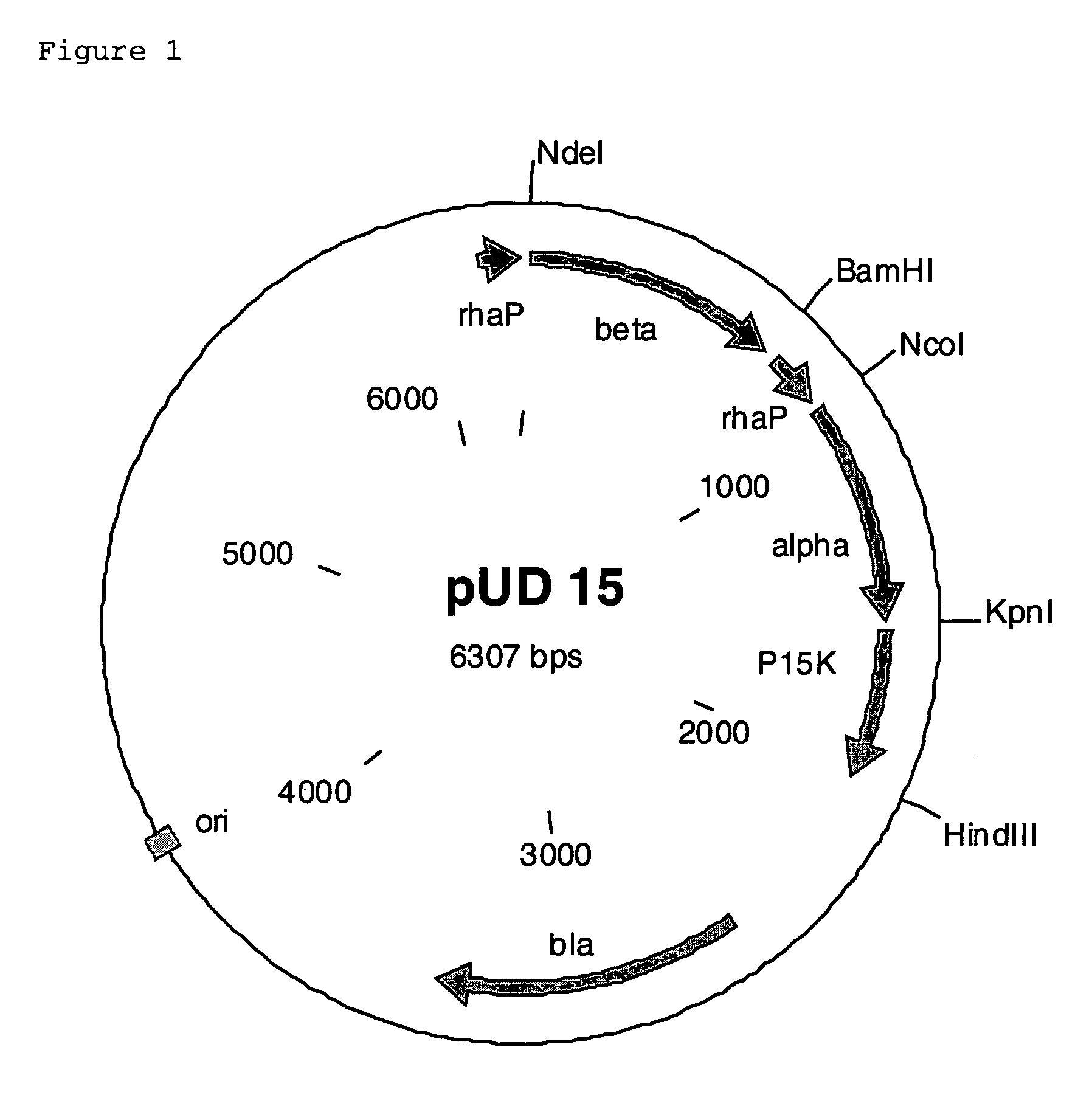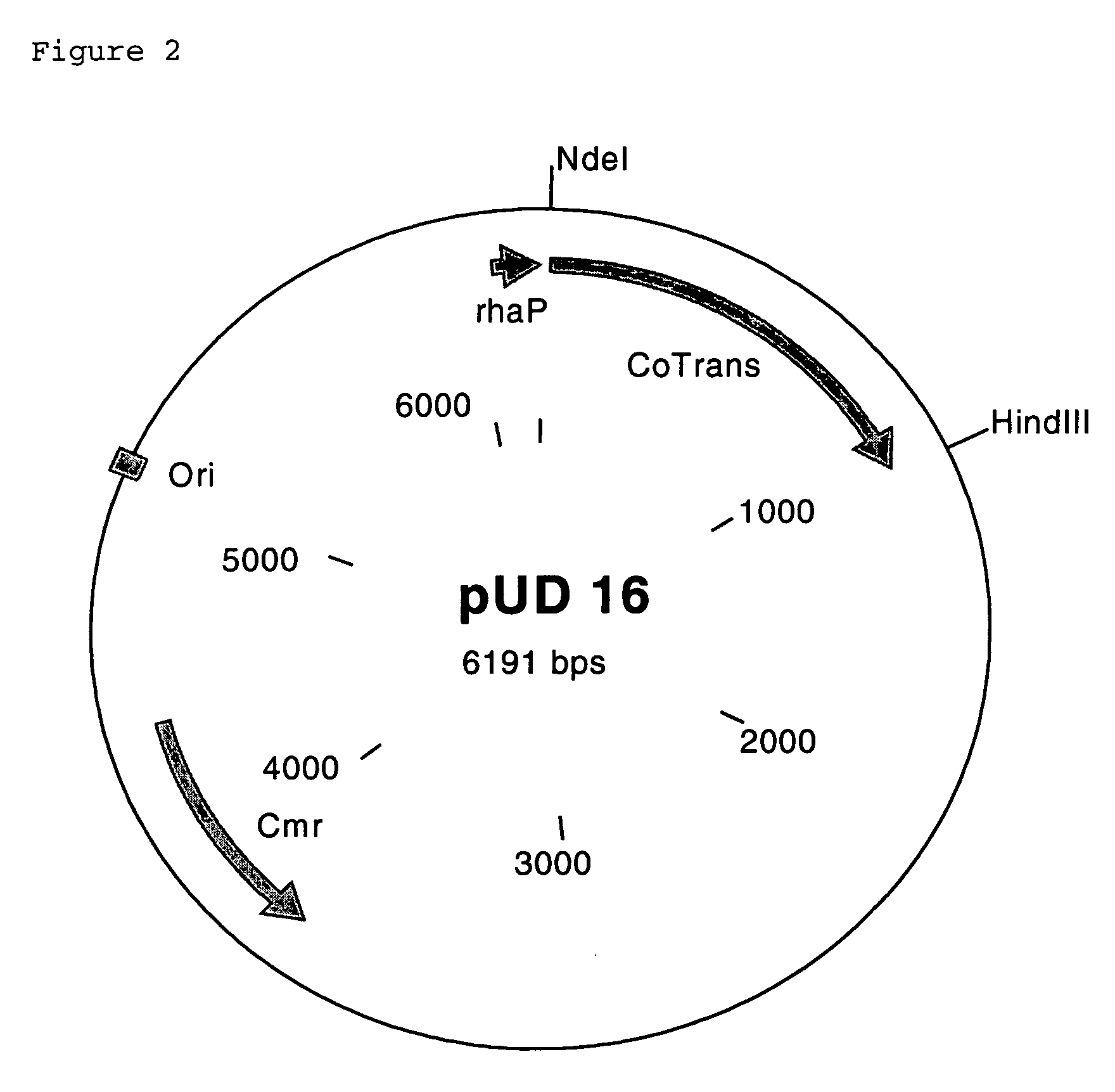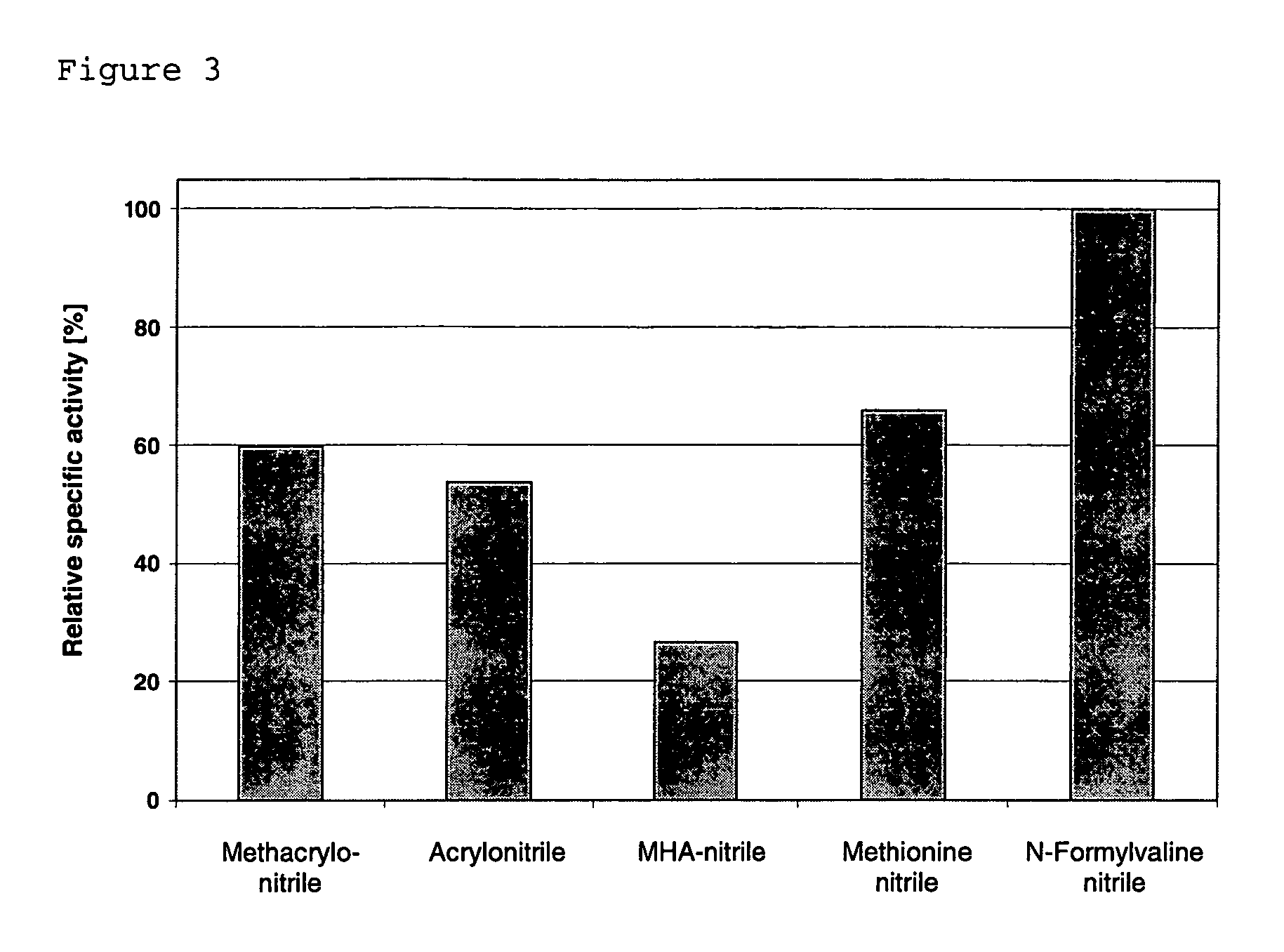Rhodococcus nitrile hydratase
a technology of rhodococcus and nitrile, which is applied in the field of rhodococcus polynucleotide cluster, can solve the problems of insufficient availability of high-activity biocatalysts, and achieve the effects of extending the lifetime of mrna, enhancing enzyme activity, and increasing expression
- Summary
- Abstract
- Description
- Claims
- Application Information
AI Technical Summary
Benefits of technology
Problems solved by technology
Method used
Image
Examples
example 1
Cloning the Rhodococcus opacus Nitrile Hydratase
[0150]Rhodococcus opacus chromosomal DNA was digested with the restriction enzymes PinAI, PstI and XmaI (Roche) and the fragments were separated on a 0.8% agarose gel. Standard methods (e.g. in Sambrook et al.: Molecular Cloning, A Laboratory Manual, Cold Spring Habor Laboratory Press, 1989) were used to carry out a Southern blot onto a positively charged nylon membrane (Hybond-N+, Amersham). Hybridization was carried out with a DIG-labeled probe in accordance with the manufacturer's (Roche) instructions. The probe was prepared by means of PCR using the degenerate primers 1F and 1R and employing genomic DNA as a template. The primers were derived from homologous regions of the β subunit, with these regions being determined by aligning the sequences of various NHases. Their sequences were obtained from databases. In order to isolate a detected PinAI fragment of approx. 2.2 kb in size, PinAI-cut DNA fragments of between 2 and 2.5 kb were...
example 2
Constructing the Expression Vectors
[0154]The structural genes were cloned into an expression vector which is known for being used in E. coli and in which the inserted genes are under the control of a rhamnose promoter. A second rhamnose promoter was inserted in addition. To achieve this, the gene for the β subunit was amplified using the primers 5F and 5R, which inserted cleavage sites for the restriction enzymes NdeI, BamHI and HindIII. The second rhamnose promoter was amplified using the primers 6F and 6R, which inserted the cleavage sites for the restriction enzymes BamHI, NcoI and HindIII. The gene for the α subunit was amplified using the primers 7F and 7R, which inserted cleavage sites for the restriction enzymes NcoI, KpnI and HindIII. The gene for the P15K protein was amplified using the primers 8F and 8R, which inserted the cleavage sites for the restriction enzymes KpnI and HindIII and altered the start codon from GTG to ATG. The expression vector which was constructed in ...
example 3
Heterologous Expression of the Nitrile Hydratase in E. coli DSM 14559
[0163]DSM 14559 was deposited in connection with DE 101 55 928.
[0164]The pUD15-transformed cells were grown, at 37° C. and while shaking, in LB medium (LB broth in accordance with Miller, VWR) which contained 1 mM CoCl2 and 100 μg of ampicillin / ml. The cells transformed with pUD15 and pUD16 were grown in an analogous manner but with the medium additionally containing 50 μg of chloramphenicol / ml. After that, the cells were inoculated over into the same medium 3 times after they had reached an OD600 of at least 2. After 12-16 hours, a quantity of the last preliminary culture was inoculated over into a main culture such that this latter had an OD600 of 0.1. While the culture medium for the main culture corresponded to that for the preliminary culture, it additionally contained 2 g of L-rhamnose / 1. The cells were harvested after 22 hours.
PUM
| Property | Measurement | Unit |
|---|---|---|
| temperature | aaaaa | aaaaa |
| temperature | aaaaa | aaaaa |
| temperature | aaaaa | aaaaa |
Abstract
Description
Claims
Application Information
 Login to View More
Login to View More - R&D
- Intellectual Property
- Life Sciences
- Materials
- Tech Scout
- Unparalleled Data Quality
- Higher Quality Content
- 60% Fewer Hallucinations
Browse by: Latest US Patents, China's latest patents, Technical Efficacy Thesaurus, Application Domain, Technology Topic, Popular Technical Reports.
© 2025 PatSnap. All rights reserved.Legal|Privacy policy|Modern Slavery Act Transparency Statement|Sitemap|About US| Contact US: help@patsnap.com



